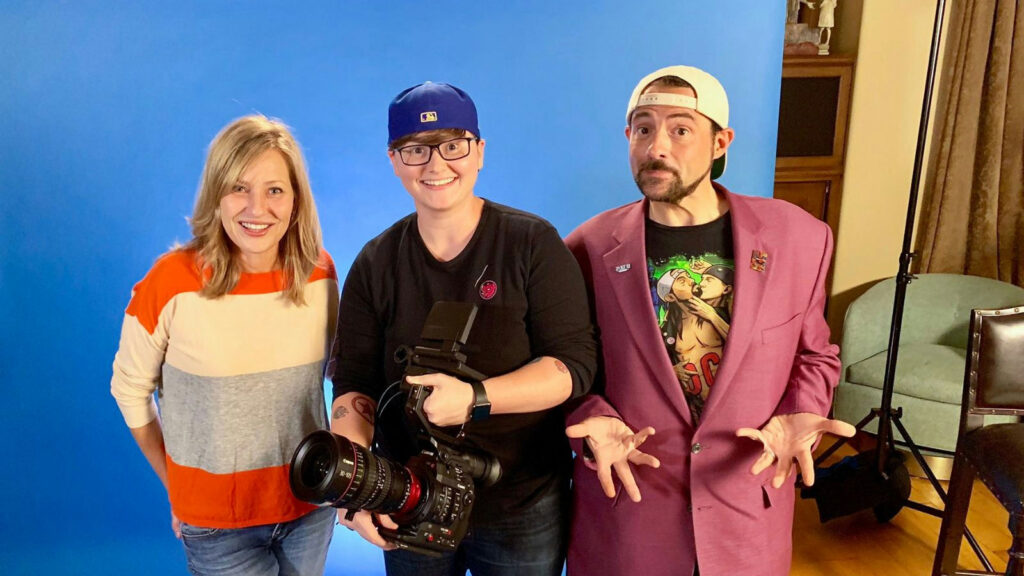A Fan Fueled Examination of Kevin Smith’s Increasingly Complicated 1997 Film
DIRECTED BY SAV RODGERS/2024 (U.S. Wide Theatrical Release)

In 2020, young queer filmmaker Sav Rodgers presented a TED Talk on how the controversial film Chasing Amy saved his life as a teenager. This presentation would capture the intention of director Kevin Smith, and what follows has been captured on film in Chasing Chasing Amy. As a self-declared super-fan, Rodgers’ passion shapes his debut documentary as he delves into the cultural significance of his favorite film. What initially starts as a loving tribute to a fan’s favorite film develops into a deeply personal conversation about identity.
The formula here is familiar and sound. Rodgers has assembled a conglomeration of filmmakers and critics to assess the legacy of Chasing Amy in a revolving door of interviews. The focus of the documentary balances between the film’s role in queer history and how it has molded Rodgers’ entire life path. In a way, he gets to engage in practically every fan’s wildest dream. Through his journey to create Chasing Chasing Amy, Rodgers strikes up a budding friendship with Kevin Smith, visits numerous filming locations with his partner, and has the opportunity to interview various creatives who were involved in the project. The entire experience borders on a picturesque dream sequence, and Rodgers sails through his filmmaking journey with as little fuss as possible. For the initial half of the documentary, the direction is clear and overwhelmingly upbeat and positive.
It is when Rodgers has the chance to interview Joey Lauren Adams one-on-one that this entire project pumps the brakes. What starts as a typical conversation about Chasing Amy derails when Adams questions what outcome Rodgers truly desires from this interview. The tension is palpable as she begins to divulge the truth behind her connection to this film that made her career. The mention of Harvey Weinstein (for the second time after Smith’s brief discussion of his involvement in the film) is explanation enough, but Adams does not hesitate to discuss the blatant misogyny that plagued her experience in the industry. It is a raw moment of vulnerability from Adams that clearly shakes Rodgers to his core.

The tonal shift is instantly evident after this interview with Adams, and it begs to question why a documentary like Chasing Chasing Amy should exist. Rodgers is forced to step back from his project to find a suitable answer to that question. Perhaps inspired by Adams candor, Rodgers finally truly flips the camera onto his own life as he grapples with the imperfections of the film he credits with saving his life. From this moment on, Chasing Chasing Amy becomes an autobiographical tale about the struggles of identity. Though it is unarguably emotional and a touching insight into an individual’s struggle to find self-acceptance, it feels like a stilted ending to the documentary.
There is an abundance of material presented here, and it is frustrating that the bulk of it is left unaddressed. Chasing Amy is supposedly a problematic film, but it feels as though Rodgers only skirts discussing the controversy of this film. One of the more fascinating pieces of insight here is when lesbian indie filmmaker Guinevere Turner ruminates on the success of Chasing Amy compared to her own queer work. The bitterness is undeniable as Turner reflects on her project was torn apart while the straight cisgender man received the film empire of his dreams. This line of conversation is undoubtedly fascinating, but Rodgers does not pursue it any further. It is this effort – consciously or otherwise – to avoid completely tarnishing the art he loves that makes Chasing Chasing Amy lose the powerful edge it had the potential to have.



